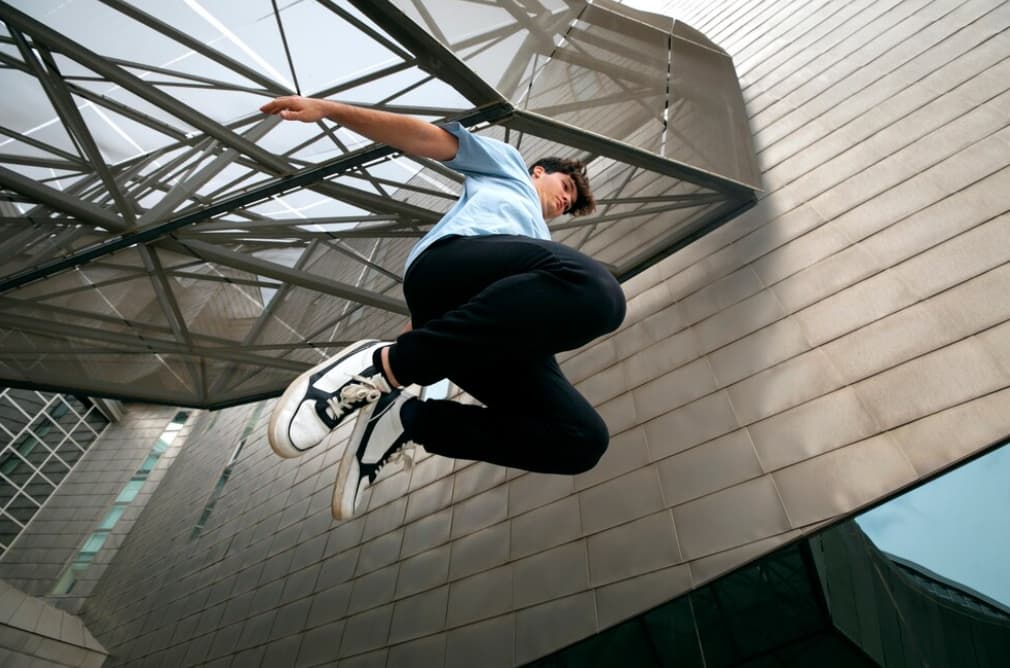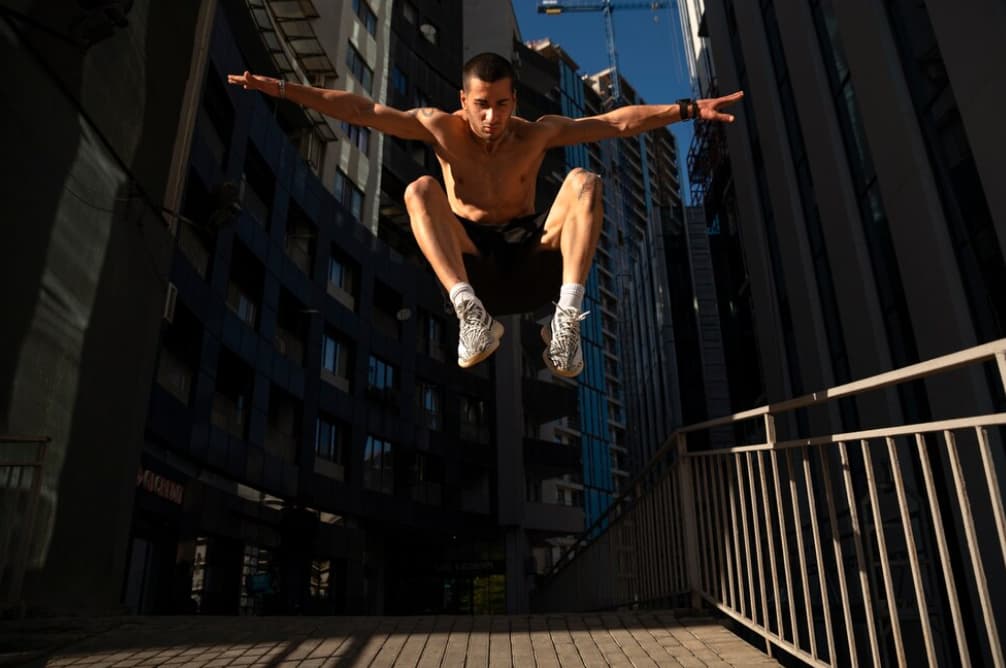Stunning parkour scenes in action-pack films and athlete show reels on Youtube are simply snapshots of the essence of parkour. These daring stunts and precise maneuvers are eye-catching, creating an impression of an extreme, daredevil sport. Yet, this depiction is only a fraction of what parkour truly embodies – a discipline that demands years of training, commitment, and a profound understanding of one’s physical and mental capabilities. Mastering insane parkour jumps requires more than just daring; it also demands the ability to jump higher instantly, a skill we’ll explore in this article.
Essential Guidelines for Parkour Safety
Safety stands as the primary concern in parkour. About 90% of those involved in parkour, especially the highly skilled practitioners, are aware of the severe consequences associated with injuries. The negative aspects include enduring pain, incurring significant medical costs, managing various complications, and most notably, the inability to continue training.
Beginning with Basic Techniques
Parkour training typically follows a methodical progression. Complex moves, such as kong gainers from the heights of two-story buildings, are generally not attempted without substantial experience, despite any humorous myths within the parkour community. Training starts with the basics and intensity and difficulty increase gradually. This incremental learning approach is common in many life skills, akin to acquiring simple arithmetic before tackling more complex math.
In general, parkour development requires a systematic enhancement of physical skills and spatial awareness, akin to other skill-acquisition processes.
Parkour Training: Building Fundamentals & Safety

Training in parkour begins with a focus on establishing a strong foundation. This includes enhancing strength, flexibility, balance, speed, body awareness, and confidence in fundamental movements. As practitioners advance, they learn complex movements through a series of progression steps to maintain safety and ensure consistent development.
- Take, for instance, the rail-to-rail precision jump, which entails leaping between two rails six feet apart. Initially, the training emphasizes mastering the mechanics of jumping;
- Once proficient in form, practitioners practice precision jumps from one line to another on flat ground, aiming to cover a six-foot distance;
- Subsequently, they progress to jumping across low obstacles, like curbs or blocks, spanning six feet;
- After gaining confidence with these exercises, they practice jumps on low rails before attempting low rail-to-rail jumps.
Only after extensive practice, which could span weeks or years depending on individual progression, does one attempt the full six-foot rail-to-rail precision jump.
Beyond the Spectacle
The stunts portrayed in movies and highlight reels represent only a small portion of parkour practice. The majority of training occurs close to the ground and within safe environments. When attempting new, extreme acrobatic maneuvers, they are first practiced in gyms to ensure mastery before being attempted outdoors. Moves are performed only when there is complete confidence in their execution. If there is any hesitation, the attempt is postponed, acknowledging that there is always another opportunity to try.
Proficiency Levels in Parkour: The Journey to Expertise
The high-octane parkour stunts showcased in films and popular online videos are typically executed by seasoned athletes with years of rigorous practice behind them.
For these expert practitioners, executing complex maneuvers is as routine as walking is for the average person. Compared to athletes in high-contact sports, these parkour experts have a relatively low likelihood of injury due to their proficiency.
Misconceptions about Parkour Training
Contrary to popular belief, parkour training does not necessitate leaping between buildings. The essence of parkour lies in personal growth, both physical and mental. Respect within the parkour community is earned not by the recklessness or the perilous nature of the moves, but by personal evolution and the ability to continuously improve and master the discipline.
Parkour Training: Open to All Skill Levels

There is always an opportunity to develop natural movement skills through parkour, regardless of one’s current physical condition. Building a foundational skill set and initiating basic movement training is achievable for everyone. Parkour training enhances strength, coordination, flexibility, and body awareness, equipping individuals to handle various physical scenarios efficiently. While accidents such as slipping on stairs, sustaining knee injuries from jumps, or struggling to climb over obstacles may occur to some, parkour training can significantly reduce these risks through improved physical capabilities and heightened awareness.
For those interested in parkour, the invitation is open to begin training with structured programs that offer guidance on fundamental movements. These courses ensure a proper start and also introduce dynamic techniques, such as scaling walls, which can add an element of flair to the skill set. Access to such training is readily available, often starting with introductory courses.
Conclusion
Parkour is much more than the thrilling stunts depicted in action films and athlete show reels. It’s a disciplined practice that takes considerable time, patience, and persistent training to master. It’s a journey of personal development, physical conditioning, and mental resilience. Whether you’re a beginner or an advanced practitioner, parkour fosters a transformative experience that equips you with superior strength, flexibility, and body awareness. So, whether you’re contemplating starting or advancing your journey in parkour, embark on this enriching adventure with safety, dedication, and a constant thirst for learning and progression.